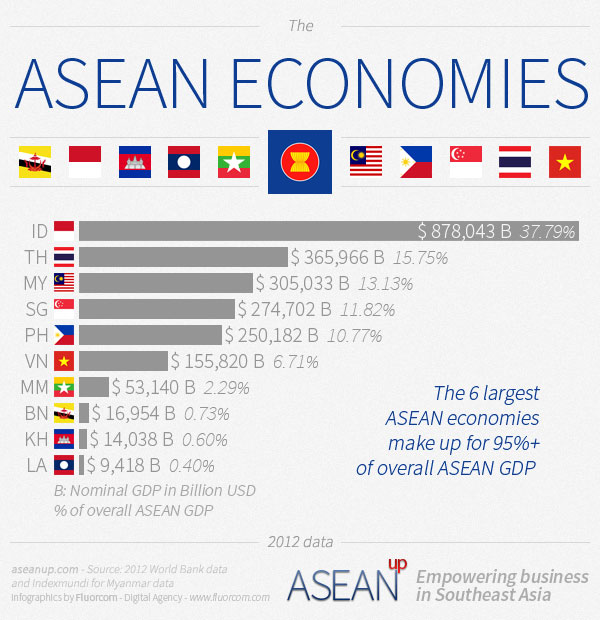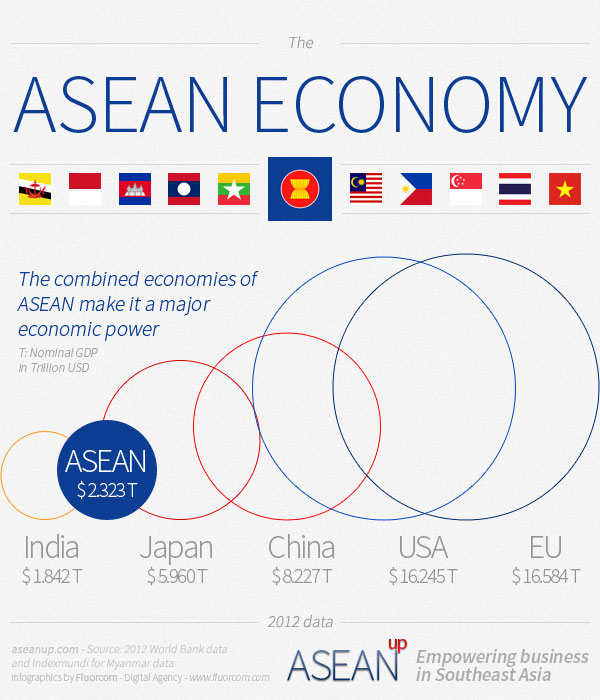The Philippine Stock Exchange Composite Index or PSEi is a free float market capitalization-weighted index; it is the benchmark measuring the performance of the Philippine stock market.
It is one of the eight constituent indices of the Philippine Stock Exchange (PSE) which include
- PSE All Shares Index (ALL) - broad index
- PSE Composite Index (PSEi) - main index
- PSE Financials Index (FIN)
- PSE Holding Firms Index (HDG)
- PSE Industrial Index (IND)
- PSE Mining and Oil Index (M-O)
- PSE Property Index (PRO)
- PSE Services Index (SVC)
BLAH BLAH BLAH BLAH BLAH.
(First sentence pa lang hindi ko na naintindihan.)
You might just be asking yourself right now. What is he talking about? Market capitalization? Index?
Market capitalization is the market value of a company’s outstanding shares, while an index lists down publicly traded companies according to some commonality (say, sector/industry or revenue source) and hence, in most but not all cases, directly represents investor confidence and further the general state of the Philippine economy (as mostly determined by ALL and PSEi).
Free float market capitalization is the market value of a company based on the shares that are readily available in the market or that is actively traded by the public who compose the free float. Free float shares are equal to the total number of outstanding shares minus the locked-in shares (shares which have not been held for a relevant "holding period" and thus cannot be sold or withdrawn, these are commonly held by company executives, investors with a large chunk of ownership in the company).
Unlike free float market cap-weighted indices, full-market cap-weighted indices are reliant on valuations based on the equity (stock) price times the total number of outstanding shares and these indices’ movement do not accurately reflect market movements. Full-market cap is significantly higher than free float market cap which only takes into consideration the shares freely available in the stock market.
Let's apply what we learned.
To further simplify what I'm talking about, let's say we have a given PSEi-listed public company Spotlight Inc, of which I am 30% owner of the total number of outstanding shares, then two companies Maria Osawa Corp and AlDub Corp each owns 20% of Spotlight Inc's total equity which shouldn't be sold even after our IPO, then the remaining 30% is held by the public.
This 30% is Spotlight Inc's free float level (%) which is the portion of Spotlight Inc that's publicly traded. It's determined by subtracting 30% (my ownership), 20% (Maria Osawa Corp), and 20% (AlDub Corp) from 100%.
Suppose Spotlight Inc has a total number of outstanding shares = 100,000, each share having a market price of 100 Php, then:
- Spotlight Inc's free float market cap = 30,000 shares * 100 Php = 3 million Php
- Spotlight Inc's full-market cap = 100,000 shares * 100 Php = 10 million Php
Actually maliit lang siyang company haha! As you can see, the performance of a stock is better measured by the value dictated by the market, which mostly consists those investors/traders holding shares (free float). The full-market cap assumes the company's value if and when all shares (including shares I, Maria Osawa Corp and Aldub Corp controls which we would never sell) were sold at the current market price.
But, wait, your title mentioned the term blue-chips or blue chips. What is that?
Investopedia describes blue chips as companies which
generally sell high-quality, widely accepted products and services. Blue chip companies are known to weather downturns and operate profitably in the face of adverse economic conditions, which helps to contribute to their long record of stable and reliable growth.
How are stocks selected to become a part of the PSEi?
According to PSE Academy,
The selection of these companies is based on a specific set of criteria. Under the revised policy on index management, companies should meet three (3) criteria to qualify under the PSEi:
1. The company’s free float level must be at least 12%.
2. The company must rank among the top 25% in terms of median daily value in nine out of the twelve-month period in review.
3. Ranking of TOP 30 qualified companies based on full market capitalization.
The chart below features the 30 blue-chip stocks representing the PSEi. I sort of failed to label the axes because I don't know how to haha. I'm not used to creating bubble plots like these or plots for that matter.
Figure 1. The 30 Blue Chip Companies of the PSEi (Please click image to enlarge.)
First, allow me to describe what I did. I inputted data from the PSE online portal and sorted the companies in the PSEi (composing the top 30 blue-chip stocks) according to descending free float market capitalization, which I think is the value dictated by the trading public who own the allowed free float % of the company’s shares. The bubble’s size reflects this value.
Second, please don’t mind the x-axis (horizontal axis) as I grouped them into six so that I would end up with a vertically sized plot rather than an extremely long horizontally sized plot which wouldn’t fit in this blog post hehe. The y-axis, on the other hand, represents the free float market values, which are also described by the bubbles' size.
Third, each bubble’s color indicates the sector with which that company belongs. Blue is to Conglomerate, as dark red is to Telecom. Orange is to Consumer, as purple is to Banks and Financial. Green is to Property, while black is to Power. Pink is to Commerce and Industrial, as blue green is to Gaming. Lastly, bright red is to Mining.
Here are some thoughts to ponder.
Figure 2. SM vs TEL vs ALI vs Bottom 10 (Kindly refer to this figure for bullets 1 and 2.)
1. The most valuable company by free float market capitalization in the list of top 30 companies (blue-chip stocks) that make up the PSE index (PSEi) is Henry Sy’s SM Investments Corp (SM). Its size is so huge it’s the only company that reached free float market cap of more than 300 billion PHP. It belongs to a class of its own – the 300-billion-peso-value active-market-traded companies. Its weight in the PSE index is more than 10 percent, big enough that if anything bad happens to SM’s stock price, it directly affects the whole of PSEi.
SM’s free float market value is greater than the combined free float market cap of the 10 smallest companies included in the PSEi, namely Manila Electric Company (Meralco), Robinsons Land Corp, DMCI Holdings, LT Group, Semirara Mining and Power Corp, First Gen, Emperador Inc, Bloomberry Resorts Corp., San Miguel Corp., and Petron Corp. That’s how titanic SM Investment Corp is!
2. The runners-up almost reached SM’s size, but missed by several billions. It’s Philippine Long Distance Telephone Company or PLDT with ticker TEL and Sy’s SMPH competitor Ayala Land Inc. (ALI), valued at approximately 293 billion and 275 billion, respectively. Both companies have a huge influence on the trajectory of the PSEi for their respective 8.94% and 8% weight. Hence, if you see red in your portfolio, or if the PSEi falls, it may be related to stock price fluctuations in the three companies I mentioned, plus some of the other companies with huge impacts on the PSEi movement.
3. Here’s a complete list of the top 30 (blue chip) companies.
Figure 3. Top 15 Blue-chip Stocks by Free Float Market Valuation
Figure 4. Bottom 15 Blue-chip Stocks by Free Float Market Valuation
For the remaining bullets, refer to the figure below:
Figure 5. Influence of Companies in the PSEi by Industry/Sector
4. 33% of the PSEi, or 10 out of 30 blue-chip stocks, are represented by Conglomerates. These companies make up 36.6% of the total free float market cap, which means any rise or drop in the PSEi may be due to price movements in these stocks. These conglomerates, from largest to smallest, are SM Investments Corp (SM), Ayala Corp (AC), JG Summit Holdings (JGS), Aboitiz Equity Ventures, Inc (AEV), Alliance Global Group, Inc (AGI), GT Capital Holdings, Inc (GTCAP), Metro Pacific Investments Corp (MPI), DMCI Holdings, Inc (DMC), LT Group, Inc (LTG), San Miguel Corp (SMC), and Petron Corp (PCOR).
5. Four (4) companies (or 13.33%) come from the Property sector and compose 16.63% of the total free float market cap of the PSEi, which could also have a big impact on the index’s performance. These property companies, from largest to smallest, are Ayala Land, Inc (ALI), SM Prime Holdings, Inc (SMPH), Megaworld Corp (MEG), and Robinsons Land Corp (RLC).
6. Another four (4) players come from the Power sector, but unlike the Property companies, they only make up 6.21% of the total free float market cap. These include Aboitiz Power Corp (APC), Energy Development Corp (EDC), Manila Electric Company (MER), and First Gen Corp (FGEN).
7. The Consumer, and Banking and Financial sectors each have three (3) companies in the list. The Consumer companies Universal Robina Corp (URC), Jollibee Foods Corp (JFC), and Emperador Inc (EMP) account for 9.03% of free float market cap, significantly higher than those Power companies. Though only three banks (BPI, BDO, and MetroBank) are included in the PSEi, their free float market cap combined is higher with 14.43% of total free float valuations in the PSEi
8. The duopoly in the Telecoms industry belongs to the PSE index as well. Globe and PLDT’s free float cap make up 11.28% of the PSEi’s total.
9. The Commercial and Industrial sector also has two (2) companies in the list, which accounts for 3.86% of the PSEi’s total float-adjust market cap. These companies are International Container Terminal Services, Inc (ICT) and Petron Corp (PCOR).
10. Mining and Gambling sectors each have one (1) company in the PSEi. Gaming firm Bloomberry Resorts Corp (BLOOM) contributes 0.77% to the PSEi’s total, while mining firm Semirara Mining and Power Corp (SCC) composes 1.14% of the total free float valuations.
Figure 6. SM vs PCOR
11. The smallest company, in terms of free float market cap, included in the PSEi is Petron Corporation (PCOR), the largest oil refining and marketing company in the Philippines with a value of 18.9 billion PHP. It has a weight of 0.58% in the index. Its free float market cap is only 5.507% that of SM Investments Corp. Just see Figure 6 to see the difference! :)
P.S. It pays to share knowledge to others hehe! Let your friends know about this post via the Share button floating on the left edge of this post. If you want to get updated about what I write, do like my page
Spotlight Philippines. Salamat po!

























